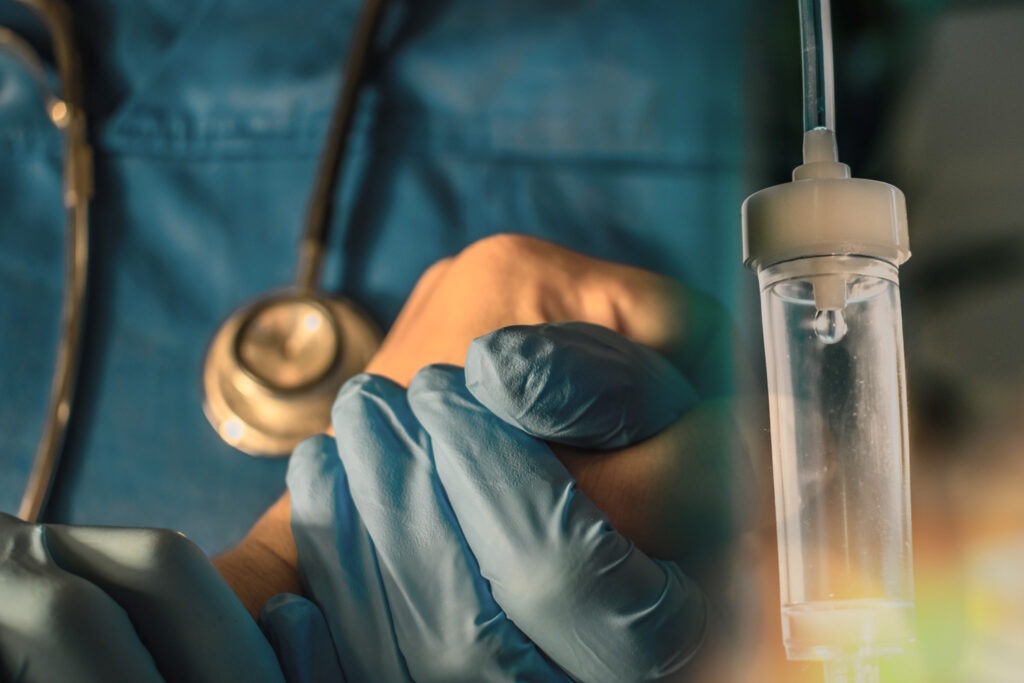When her daughter contracted a debilitating infection, Deirdre Pinto stepped in to help. Not only did she push for more effective care for her 24-year-old daughter, she also became an advocate for patients battling urinary tract infections (UTI).
Now Chair of Chronic UTI Australia, Ms Pinto’s support for patients and patient groups navigating diagnosis and access to UTI treatment has brought her up-close to the global threat of antimicrobial resistance (AMR) and the diminishing power of antibiotics to beat infection.
UTI patients depend on antibiotics but so too do those battling a range of medical conditions, from diabetes and cystic fibrosis to trauma from road accidents and more.
For those seemingly diverse patient groups – and potentially, many others in the future – AMR is the common enemy that threatens their health and, in many cases, their lives. Of nearly 50,000 deaths attributed to cancer in Australia in 2022, infection is a leading cause of mortality.
Chronic UTI Australia advocates for patients for whom antibiotics have failed and who have endured long journeys with recurrent and chronic infections.
“We’re very concerned – as is everybody – that the antibiotics that they rely on for their wellbeing and to relieve them of dreadful pain and dysfunction are becoming less effective,” says Ms Pinto.
“
Patients don’t actually realise that they’re one of many affected by AMR.
Nenad Macesic
A vicious circle for vulnerable patients
Dr Nenad Macesic is an infectious diseases physician at the Alfred Hospital in Melbourne and a senior research fellow at Monash University. As a clinician, he treats groups for whom AMR is a significant threat, like immunocompromised patients who have undergone solid organ or bone marrow transplants or those receiving immunosuppressive medications for other reasons, including cancer treatment.
Their disease predisposes them to infection, for which they need antibiotics and time in hospital. But both can lead to antibiotic-resistant infections, creating a vicious circle.

At the Alfred’s intensive care and trauma units, Dr Macesic treats patients who have been in accidents or who have acquired surgical infections, as well as those with community-acquired antibiotic-resistant infections.
Of these, patients living with highly resistant bacteria – like carbapenem-resistant Enterobacterales (CRE) or methicillin-resistant Staphylococcus aureus (MRSA) – are among the most challenging to treat.
“These antibiotic-resistant infections often don’t occur in isolation, there are usually problems associated with something else that’s going on for a patient, like cancer treatment, so patients don’t really see AMR infections as an entity in their own right,” Dr Macesic says.
“That’s problematic, because people don’t have access to the support they need. Patients don’t realise that they’re one of many affected by AMR.”
This has led to a push for antibiotic stewardship, which aims to preserve the effectiveness of antibiotics by reducing the unnecessary use of antibiotics where possible. Advocates like Pinto, however, worry that the pressure to ‘spare’ antibiotics by limiting access and shortening treatment represents a risk of infection going untreated or under-treated, becoming entrenched or even threatening the lives of patients in vulnerable groups.
“We’re concerned about AMR,” she says. “But we’re also concerned that the efforts to manage AMR are inadvertently creating a problem for our patients.”
The treatment balancing act
Dr Macesic concedes that balancing antibiotic use is challenging. Clinicians have to make a judgement about the most appropriate treatment, which can be difficult when it could be days before lab results are available to direct precision treatment.
“If someone’s sick, you have to start ‘best guess’ antibiotics. There are possibly other things going on for that patient at the same time, that you have to manage as well,” he says.
“
The WHO has pushed to create networks of AMR survivors, and I think we need to mirror that in Australia.
Nenad Macesic
“There’s tension between choosing something broad spectrum – which doesn’t really affect your patient but drives antibiotic resistance – versus choosing something that’s narrow spectrum, which doesn’t affect the broader ecology in terms of AMR as much but might under-treat that patient.”
Improved diagnostics could boost antibiotic effectiveness. Chronic UTI Australia advocacy takes aim at the common dipstick tests – paper strips in a urine sample – as an antiquated, often ineffective way to detect infection. Urine culture tests, too, might be inaccurate and these factors can be a barrier to early treatment.
Dr Macesic acknowledges an urgent need to overhaul ‘old-fashioned’ diagnostic practices, with better tests enabling more rapid personalised therapy that needs fewer antibiotics.
New treatments and therapies, too, are expected to improve outcomes for patient groups vulnerable to resistant infection. Challenges in developing novel antibiotics notwithstanding, Dr Macesic believes new antibiotics will, in time, mitigate the AMR crisis.
Next-gen therapies include nano-bubble technology to deliver hyper-targeted antibiotics and bacteriophage (phage) therapy which matches ‘predator’ viruses to ‘prey’ bacteria to destroy infection.
“Nobody likes taking antibiotics,” says Ms Pinto, who wants more research and funding for both UTI and AMR. “A promising strategy is to develop alternative therapies so then we can save antibiotics for when nothing else works.”
“
We’re very concerned – as is everybody – about the fact that the antibiotics that they rely on for their wellbeing … are becoming less effective.
Deirdre Pinto
Vaccines to the rescue?
Prevention, including infection-control measures, is another pillar of defence against AMR. Vaccine development to tackle bacterial infection is a leading prospect and, in fact, promising early vaccines are already available for UTI.
Dr Macesic says research identifying ways to modulate the microbiome to make it more difficult for antibiotic-resistant bugs to colonise people could revolutionise treatment too, especially for patients vulnerable to chronic infection.
Ms Pinto’s family story and others that capture the patient experience of AMR should be widely shared, according to Dr Macesic. He wants the issue front-of-mind for policymakers and clinicians as well as emerging patient cohorts that are similarly affected.
“The World Health Organization has pushed to create networks of AMR survivors and I think we need to mirror that in Australia, both to raise awareness in the community but also in terms of our approaches to surveillance,” he says. “If you don’t quantify something, you can’t really improve it.”
“
A promising strategy is to develop alternative therapies, so then we can save antibiotics for when nothing else works.
Deirdre Pinto
Michelle Fincke is a Melbourne-based freelance journalist and editor. She has spent the last two years working with case studies and writing in the public health space.

